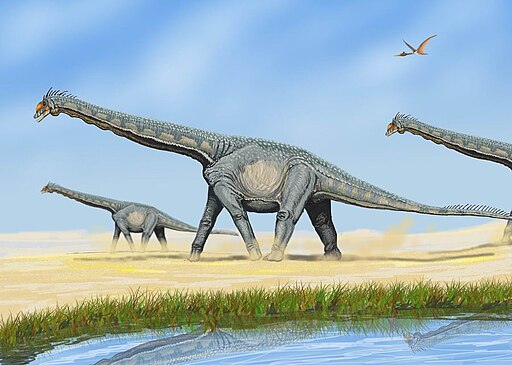The Giant of the Cretaceous
Alamosaurus was a colossal sauropod dinosaur that lived during the Late Cretaceous period, around 70-66 million years ago.

| Meaning | Named after the Ojo Alamo Formation [Alamo-saurus] |
| Pronunciation | AL-ah-mo-sore-us |
| When: | Late Cretaceous (about 70–66 million years ago) |
| Where: | North America (USA, New Mexico, Texas, Utah) |
| What: | Sauropod (titanosaurid, herbivorous) |
| Weight: | Estimated around 30–70 metric tons |
| Length: | Approximately 21–30 meters (69–98 feet) |
| Diet: | Herbivorous (ate high vegetation) |
| Discovered: | First described by Charles W. Gilmore in 1922 |
It was one of the last and largest sauropods, reaching lengths of up to 30-35 meters (98-115 feet) and weighing as much as 30-48 tons.
Alamosaurus had a long neck, a relatively short tail, and walked on four sturdy legs.
It likely grazed on vegetation in the forests and plains of what is now North America, using its massive size and long neck to reach high branches.
Fossils of Alamosaurus have been found primarily in New Mexico and Texas.
